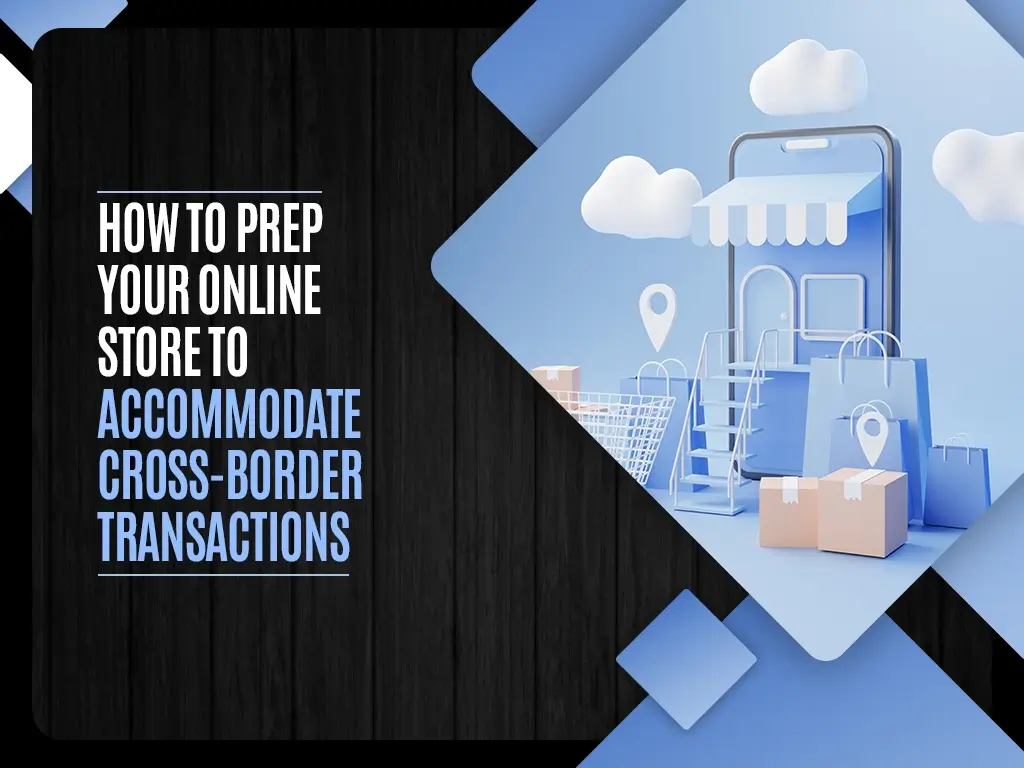How to Prep Your Online Store to Accommodate Cross-Border Transactions

It’s simple math: catering to international audiences can help your e-commerce website reach more customers than would be possible through a purely local marketing effort. Of course, successfully meeting the expectations of foreign customers and successfully converting them is another thing altogether.
Luckily, if it’s always been your dream to go this route, it may not be as hard as you initially thought to start serving an international online market. At its core, the process should be a matter of reconfiguring your website in a few keyways.
Let’s look at the essential steps that will take your growing e-commerce business to international prominence:
1) Research and Limit Your Target Markets
It might seem like a good idea to appeal to every market that you can. Unfortunately, every business organization has practical limits when expanding its reach. Every international market has its own expectations, and it’s not always possible to come up with a site that appeals to all the markets you want all at the same time. In most cases, limiting your expansion to high-value target markets that have a demand for your products is a better strategy, not just for converting overseas customers but also for conserving your marketing expenditures.
Begin by researching potential target markets, particularly those within your region as well as those with a demonstrably high demand for your product offers. Look at factors such as consumer behavior, relative purchasing power, and cultural preferences as your basis for your impending site redesign. After that, you can begin exploring sustainable strategies that work best for the market conditions and limitations you’ve identified.
2) Adopt a Secure Payment Gateway
To convert overseas customers, your site must also allow every customer to have their online payment processed reliably. Thankfully, there is no need to reinvent the wheel to facilitate this. Depending on your home country and target markets, all that usually needs to be done is to integrate a gateway that already accepts the digital payments that are most used by your target markets.
If your e-commerce site is based in the Philippines and you want to reach customers in Mainland China, you’ll want your payment gateway to accept globally available payment methods via credit and debit card. A payment gateway like Maya Business’s Maya Checkout will likely help smoothen your international conversions and set your site on the road to continued growth.
3) Consider Offering Localized Website Experiences
Oftentimes, the only way you can really cater to a specific market is to offer a localized website experience. In most cases, this involves offering multiple versions of your website in the languages used by your intended markets.
However, you can get even deeper into this by offering automatic currency conversions as well as localized customer service and shipping support. For some markets, it may even make sense to do a complete overhaul of your site’s visuals to accommodate local preferences or writing systems.
4) Look Up Legal and Regulatory Requirements
International trade remains a tricky business even in today’s landscape. As a rule, you’ll want to familiarize yourself with the legal and regulatory requirements for selling to customers in your identified target markets. Knowing the trade treaties, customs regulations, taxes, and consumer protection laws that apply will help insulate your business from risk.
Another important reason for doing your homework on regulations is that it helps you earn your customers’ trust. Clearly communicating information about customs duties, taxes, and import regulations before and during checkout can help set the right expectations and avoid unpleasant misunderstandings, earning you better customer loyalty.
5) Develop Your Shipping Processes and Partnerships
For every international market you want to reach, offer transparent shipping options with tracking to provide customers with full peace of mind. Make sure that these options have reasonably good reputations in their covered territories. For all markets, see if you can offer alternative shipping methods like consolidated shipping, economy shipping, or partnerships with local mail carriers.
6) Adopt a Mobile-First Strategy
The vast majority of international shoppers browse and make purchases with mobile devices, not desktops. Knowing that, you must ensure that your online store’s e-commerce experience meets basic expectations for mobile platforms. The text and visual elements should be responsive to the screens being used, and your site’s bandwidth requirements should be reasonably accommodated even on older digital infrastructure.
The exception to this guideline is if your business primarily caters to large organizations. For these business types, a design approach that prioritizes desktop experiences is probably warranted. Even then, you’ll still want to make sure that your site is still comfortable enough for mobile users to explore.
7) Offer a Realistic International Returns and Refund Policy
Lastly, to cater to international markets, you must address common refund and return concerns international customers have when buying from overseas sites. Investigate relevant return shipping costs, potential return windows, and refund methods to provide a positive post-purchase experience for customers worldwide.
If possible, share your refund and returns policies early in the customer journey to lessen fears and nudge site visitors towards their first purchases.
Cross-Border Trade Demands Empathetic Solutions
International e-commerce is not so much a technology problem these days given the wide availability of ready-to-use solutions for reaching overseas customers. Rather, it remains a deeply human challenge that requires the exercise of empathy and open-mindedness. Once you have those qualities down, finding a technical solution to address it is often just a matter of using the right plugins or offering the kind of information your customers need to hear. Keep this in mind as you start outfitting your online store for its first cross-border transactions.

